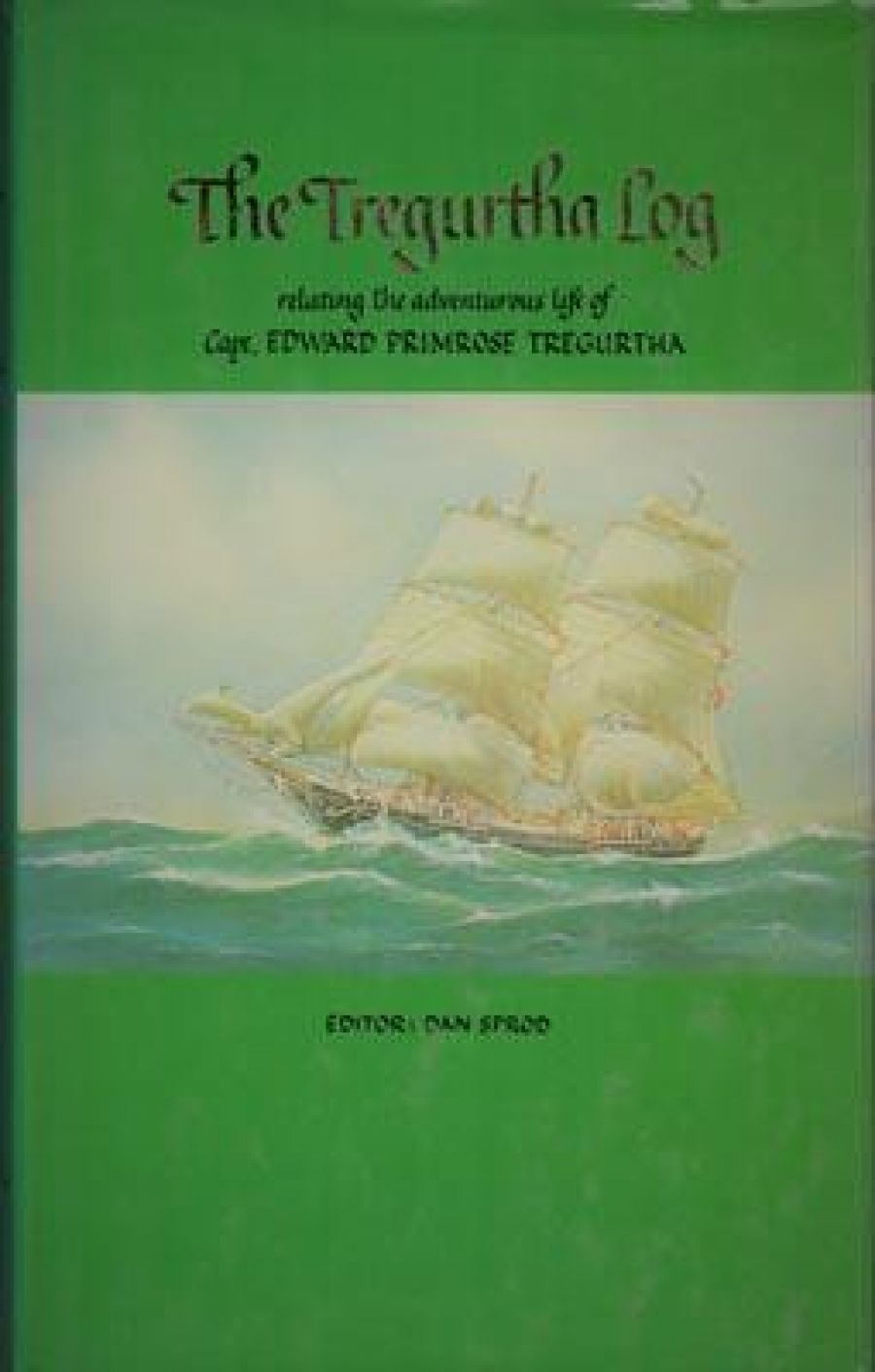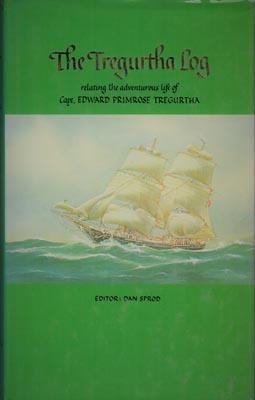
- Free Article: No
- Contents Category: History
- Review Article: Yes
- Article Title: On Land and Sea
- Online Only: No
- Custom Highlight Text:
In the closing years of the Napoleonic War, Edward Primrose Tregurtha saw active service in the navy for three years, and at the end of the war was honourably discharged – at the age of twelve years, after which he went back to school! He resumed his adventurous career as an officer in the East India Company, and saw further action in the Opium War in China, and in the troubles at Rangoon. Then followed five years of sea-faring and whaling until he finally settled at Launceston in 1836. His journal, which is reproduced in this book, covers first these early adventures and then a further sixteen years in Van Diemen’s Land and on the mainland.
- Book 1 Title: The Tregurtha Log
- Book 1 Biblio: Blubber Head Press $75 ($150 Leather Bd), 165 pp
- Book 1 Cover Small (400 x 600):

- Book 1 Cover (800 x 1200):

Perhaps in the Geelong area he did make impact on the course of colonial history. Point Henry, then Geelong’s shipping terminal, is named after his ship. He was involved in and describes the setting-out of the ill-fated expedition of Gellibrand and Hesse, and took part in, the search for them after they disappeared. But the account of the exploration of the Barwon River, given by Tregurtha in his Journal and by his partner Whiting (in an extract in an Appendix) has most historical significance. The Barwon River closely approaches Corio Bay at Geelong, but then flows in a different direction to enter the sea in Bass Strait. Tregurtha reasoned, very logically, that there could be a navigable waterway down the river, with a usable port at the mouth. Characteristically, he tested this out, becoming the first man to float a boat on that river. But the lower Baron is not navigable, and Tregurtha’s hunch came to nothing.
This is typical of Tregurtha’s whole career – a bright idea, high hopes, frustration, then failure. Though not a born loser, at least he was not a born winner. His fishing venture promised, but did not achieve; his shipping venture prospered, but did not grow into permanence; his land ventures – unlike those of his relatives, the Wettenhalls and the Dennises – did not found a distinguished pastoral dynasty; his shop on the goldfields did not blossom into another Myer Emporium. When opportunity knocked he always opened the door, but the visitor never came in. His Journal finishes with his return from the Victorian goldfields in 1852, but it seems that the unrecorded eighteen years of life that remained to him followed the same pattern. He lived in interesting days, and his Journal records some of the interest of those days: but he himself did not mould history, and was not closely associated with those who did.
His editor, Dan Sprod, sees it that way. The journal which he has prepared for the printer he values ‘for the light it throws on lesser-known aspects of nineteenth century life on land and on sea’, not for any new light, or for any light at all, that it sheds on the highroad of history. The format and presentation of this limited edition do justice, perhaps more than justice, to the archival material. Dan Sprod’s scholarly introduction and immaculate annotations are informative and interesting. The journal (and the appendices) faithfully portray the solid sea-captain and the colonial environment in which he lived and worked. But the student of history finishes the book with little added to what he, or the world, knew before.


Comments powered by CComment